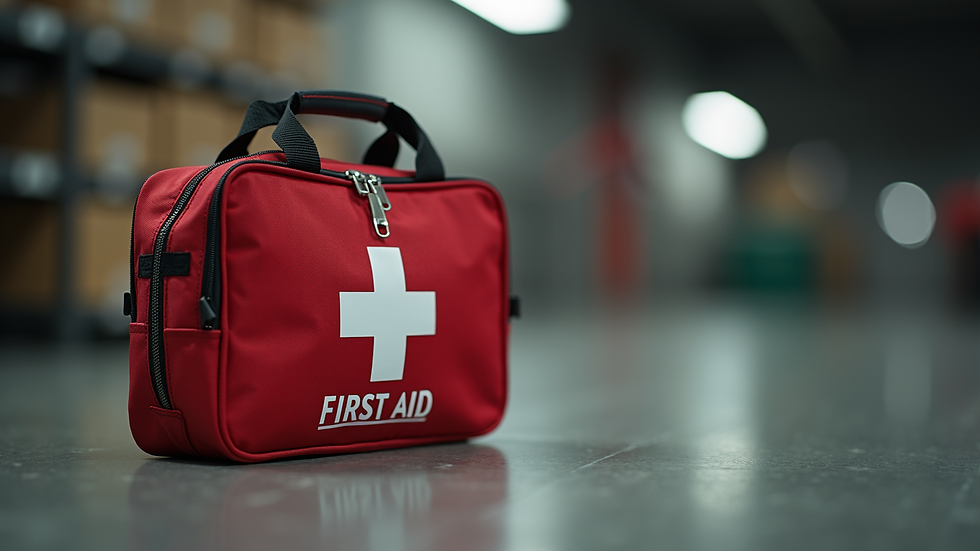How Pediatric CPR Saves Young Lives in Emergencies
- kisercpr
- Aug 15
- 3 min read
In moments of crisis, every second matters, especially when it comes to the health of our children. Whether it’s a choking incident, a near-drowning experience, or a sudden cardiac arrest, knowing how to respond can mean the difference between life and death. Pediatric first aid and CPR are essential skills that empower caregivers, parents, and healthcare providers to act swiftly and effectively. This guide will cover the critical aspects of pediatric CPR and its importance in saving young lives.
Understanding Pediatric First Aid
Pediatric first aid focuses on the unique needs of children in emergency situations. Unlike adults, children’s bodies are smaller and more fragile, requiring special considerations in emergencies. According to the American Academy of Pediatrics, over 20 million children each year experience some form of injury that requires medical attention. These can range from minor cuts to life-threatening instances requiring immediate intervention.
Education in pediatric first aid enables caregivers to recognize emergency signs early. Basic knowledge includes how to handle choking, bleeding, fractures, and other common injuries. Knowing how to respond means less panic and more effective action in critical moments.

The Importance of Pediatric CPR
Cardiac arrest in children is rare, but when it occurs, the outcome heavily relies on the immediate application of CPR. The American Heart Association reports that only about 1 in 4 children who experience a cardiac arrest outside of a hospital survive. This staggering statistic highlights the importance of being trained in pediatric CPR.
When performing pediatric CPR, bystanders can significantly increase the survival rate. Immediate intervention helps maintain blood flow to vital organs, which is crucial until professional medical personnel arrive. It is important to remember that these skills are not just beneficial for parents but for anyone who cares for children, including teachers, babysitters, and community members.

What is the Correct Procedure for CPR on a Child?
Performing CPR on a child can differ from adult CPR in terms of technique and compression ratios. Here are the fundamental steps to follow:
Step 1: Assess the Situation
Ensure Safety: Make sure the environment is safe for both you and the child.
Check Responsiveness: Gently tap the child and shout, “Are you okay?” If there is no response, proceed to the next step.
Step 2: Call for Help
Activate Emergency Services: Call 911 or ask someone else to call while you begin CPR.
Step 3: Begin CPR
Position the Child: If they are on their back, ensure the area is clear.
Chest Compressions:
Use one or two hands depending on the size of the child (more force is sometimes needed for larger children).
Push down hard and fast at a rate of 100-120 compressions per minute.
Compress to a depth of about 1.5 to 2 inches.
Rescue Breaths (if trained):
After every 30 compressions, give 2 rescue breaths.
Seal your lips over the child’s mouth and give a breath that lasts about 1 second, making sure the chest rises visibly.
Continue the Cycle: Repeat 30 chest compressions followed by 2 rescue breaths until help arrives or the child shows signs of life.

Recognizing the Signs That Require CPR
Awareness of when to administer CPR is crucial. The signs may include:
Unconsciousness: The child is unresponsive and does not react when stimulated.
Choking: The child is unable to breathe, speak, or cough loudly.
Severe Bleeding: If there is significant bleeding that doesn’t stop with applied pressure.
Near-Drowning: If the child has been submerged in water for more than a few minutes.
Recognizing these signs can help caregivers act without confusion or delay.
Empowering Caregivers with Training
Pediatric CPR training courses are widely available. Many organizations, including the American Heart Association and the Red Cross, offer comprehensive programs. These courses not only teach CPR but also cover choking relief and other first aid techniques specific to children.
Investing time in finding a suitable course can equip you with the skills needed for emergencies. It is important to keep this training updated every two years to ensure knowledge of the most current practices.
Learning from experienced instructors gives confidence and clarity. Courses often include hands-on practice and simulations that replicate various emergency scenarios.
Final Thoughts on Pediatric CPR
The ability to perform pediatric CPR can be the lifeline that saves a child's life. By fostering an understanding of pediatric first aid and regularly updating your skills, you position yourself to respond effectively in emergencies. While there are many factors beyond our control when it comes to health, being prepared can empower you to act decisively when it matters most.
Consider learning more about pediatric CPR to make a profound difference in emergencies. It not only equips you with the knowledge needed but also instills a sense of security that you can handle a crisis should it arise.
By making this commitment, you are taking an active role in ensuring the safety and well-being of every child around you.

.png)



Comments